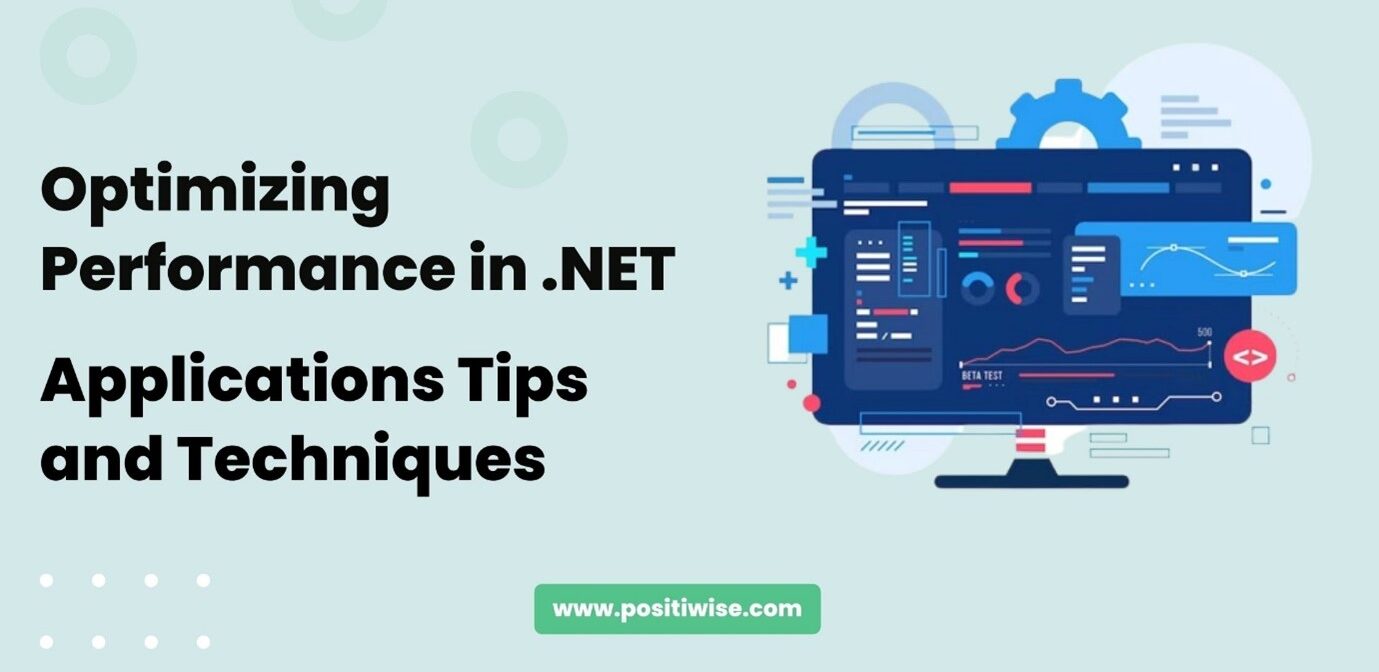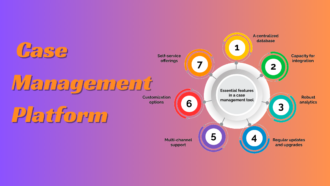Optimizing Performance in .NET Applications Tips and Techniques
A well-optimized .NET application can offer a better experience for end users by running quickly and responsively. Here are some tips and techniques you can use to improve performance in your .NET apps. Several simple but effective ways exist to improve the performance and efficiency of .NET applications.
Profiling your application is the first step to identifying bottlenecks and areas for improvement. From there, focusing on data access, caching expensive operations, using value types when appropriate, limiting heap allocations, and parallelizing CPU-intensive tasks can make a real difference in your application’s responsiveness and user experience. Optimizing performance requires a multifaceted approach, looking at how data is accessed and stored, how objects are allocated, and how CPUs are utilized. With some effort applied at the right stages of the development cycle, .NET applications can achieve measurably faster performance through these and other optimization techniques. Significant performance gains come from addressing the biggest issues first, so profiling remains a key tool throughout the optimization effort.
Key Points to Note While Optimizing a .Net Application
- Profiling to identify bottlenecks
- Optimizing data access and caching
- Using value types to reduce heap allocations
- Limiting heap allocations
- Parallelizing CPU-bound tasks
- Applying a multifaceted optimization approach
- Identifying the biggest performance issues first through profiling
Let’s discuss the Tips for Optimizing .Net apps
Top 6 Tips for Optimizing .Net Apps
Profile your app early and often
One of the most important tips for optimizing .NET application performance is to profile your application early and often during development. Profilers allow you to measure the execution time of parts of your code, determine the memory consumption of objects, track allocations, and identify bottlenecks. Without profiling, you are simply guessing where performance issues may lie.
The best time to start profiling is during your application’s initial development and architecture. This allows you to identify performance risks early before inefficient patterns are solidified in the codebase. You can then adjust your architecture and initial code to mitigate these risks.
Continue profiling your application to monitor for new performance issues as development progresses. Changes to the code, new features, and usage patterns can introduce bottlenecks over time. Profiling catches these issues before they impact end users.
Optimize Data Access
One of the most impactful ways to improve .NET application performance is to optimize how your application accesses and uses data, particularly data stored in databases. Database calls are some of the most expensive operations in any application, so minimizing and optimizing database access is critical.
There are a few main ways to optimize data access:
- Minimize database calls: The fewer database roundtrips your application makes, the faster it will run. Look for opportunities to fetch data in bulk, cache results, and consolidate queries.
- Use stored procedures: Moving data access logic to stored procedures in the database itself can improve performance. The database engine can optimize the execution of stored procedures.
- Enable connection pooling: Connection pooling reuse database connections instead of opening new ones for each operation. This greatly reduces the overhead of opening and closing connections.
- Optimize queries: Make sure queries only fetch the needed columns. Use WHERE clauses instead of filtering data in code. Apply appropriate indexes on tables.
- Database access optimizations should be a priority based on the performance impact identified through profiling. Database calls that are frequent or consume significant resources should be the initial focus.
Cache Expensive Operations
Caching the results of expensive operations is a very effective way to speed up your custom .NET development. Any operation that takes significant time or resources to compute – such as database queries, web service calls or complex calculations – is a candidate for caching.
By storing the results of expensive operations in a cache, subsequent requests can retrieve the results from the cache rather than re-computing them. This avoids performing the expensive operation each time, significantly improving performance.
Some examples of expensive operations to cache:
- Database Queries: Cache the query results instead of hitting the database each time. Invalidate the cache when the underlying data changes.
- Web Service Calls: Cache the responses from web services. Invalidate the cache when the web service indicates the data has changed.
- Complex Calculations: Calculations that take significant time can be cached, re-using the result for a period.
Use value types when possible
.NET has two main categories of types: reference types and value types. Reference types (like classes) are allocated on the heap, while value types (like structs) are allocated on the stack or inline. Using value types, when possible, can improve performance in several ways:
- Faster memory access – The stack has faster access time than the heap. Allocating value types on the stack means faster memory access for your application.
- Less heap allocation – Every time a reference type is allocated, space is reserved on the heap. Value types avoid this heap allocation, reducing memory pressure and garbage collection overhead.
- Less object overhead – Reference types have some object overhead for things like type information and inheritance. Value types do not have this extra overhead.
.NET has several built-in value types like int, float, bool, etc. You can also define your own structs as value types.
To use value types for performance, consider:
- Small, inline data – Value types are suitable for small data that can be stored inline, avoiding heap allocation.
- Immutable data – Value types should generally be immutable once created. Changes require the allocation of a new instance.
- Local scope – Value types are usually intended for local method scope, not long lifetimes.
Hence, using value types, when possible, can provide performance benefits through faster memory access, less heap allocation, and less object overhead. However, they must be used appropriately based on your scenario and trade-offs. Value types shine for small, immutable data with local scope.
Limit Allocations
When objects are allocated on the .NET heap, it can cause performance issues due to two things:
- Memory fragmentation – The heap can become fragmented as objects of different sizes are constantly allocated and garbage collected. This wastes memory and makes it difficult to allocate large contiguous blocks.
- Garbage collection pauses – The garbage collector must periodically scan and compact the heap, causing your application to pause while this happens. Frequent allocations mean more frequent GC pauses.
To reduce these issues, you should aim to limit allocations as much as possible in performance-critical code. There are a few ways to do this:
- Object pooling – Create object pools that reuse instances instead of allocating new objects. Great for short-lived objects.
- Caching – Cache computed results to avoid recreating expensive objects, as discussed in a previous tip.
- Value types – Use value types instead of reference types when possible, avoiding heap allocation altogether.
- Immutable objects – Once created, immutable objects (with read only fields) can be reused without re-allocation.
- Structural sharing – Modify object structures by changing references rather than allocating new objects.
- Memory/Object leaks – Find and fix any leaks that cause objects to accumulate over time.
By limiting allocations, you can:
- Reduce garbage collection frequency and duration – Leading to more consistent performance.
- Improve memory usage efficiency – By avoiding memory fragmentation.
- Improve cache locality – By keeping objects in memory longer.
However, be careful not to over-optimize by:
- Compromising readability and maintainability
- Introducing complex object pooling logic
- Over-using value types improperly
The key is to apply allocation-limiting techniques deliberately where profiling identifies allocation hot spots. Combining with caching of expensive operations can significantly impact .NET development service and performance.
Parallelize CPU-Bound Tasks
By identifying CPU-intensive loops and computations in your .NET code and employing parallel execution using TPL, PLINQ, or threads, you can drastically improve the performance of CPU-bound tasks – particularly on multicore systems. However, only parallelize tasks where the performance gain outweighs the overhead.
Modern computers have multiple CPU cores, allowing them to execute multiple tasks in parallel. .NET provides several APIs to take advantage of this for performance gains:
- Task Parallel Library (TPL) – Allows easily executing code in parallel using Tasks.
- Parallel LINQ (PLINQ) – Provides parallel execution of LINQ queries.
- System.Threading classes – Lower-level threading API.
To identify tasks for parallelization, look for:
- CPU intensive loops – Loops that perform calculations can often be parallelized to run on multiple cores simultaneously.
- Computations – Any standalone function or method that performs a computation can potentially run in parallel with others.
When parallelizing tasks, keep in mind:
- Overhead – There is some overhead to manage parallel tasks, so only parallelize CPU-intensive work.
- Synchronization – You may need to synchronize access to shared data.
- Memory – Each parallel task uses its own memory, so be careful of excessive memory consumption.
The main benefits of parallelizing CPU-bound tasks are:
- Throughput – Overall performance is improved by utilizing multiple CPU cores.
- Responsiveness – Parallel tasks run independently, keeping the UI and other tasks responsive.
Conclusion
While performance optimizations may seem daunting, an expert .NET development team can help identify and implement key optimization techniques to improve the speed and responsiveness of your .NET applications significantly. Profiling is the essential first step to identify bottlenecks and guide optimization efforts. An experienced .NET performance engineer can set up the appropriate profiling tools and analyze the results to pinpoint the areas with the greatest potential for performance gains.
From there, focusing on data access and caching, using value types, limiting allocations, and parallelizing CPU-bound tasks are some of the techniques an expert .NET development team can implement to optimize performance. A structured, iterative approach guided by profiling data is key to success. An expert .NET team will implement optimizations to achieve an ideal balance between performance, maintainability, and development costs.
If your .NET applications could benefit from expert performance optimizations, consider hiring experienced .NET developers. A dedicated performance engineer can also be a valuable addition to an in-house team for one-time or ongoing optimization efforts.

















